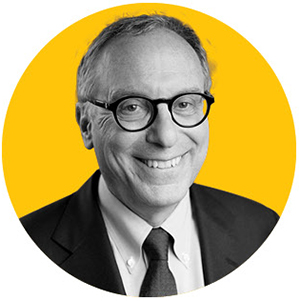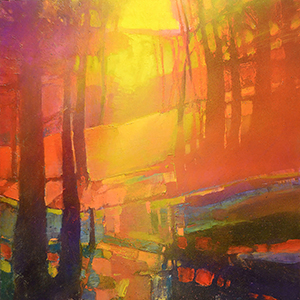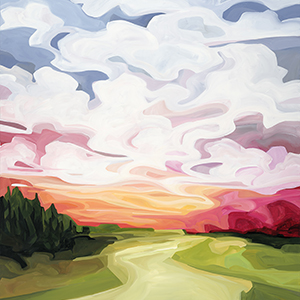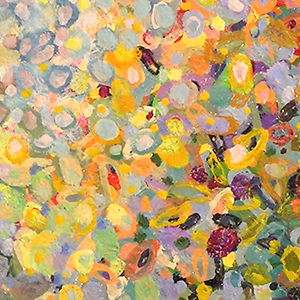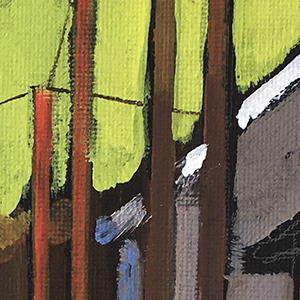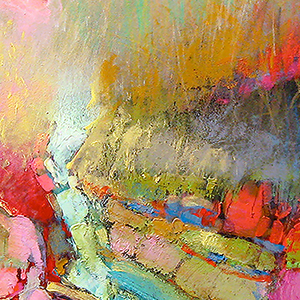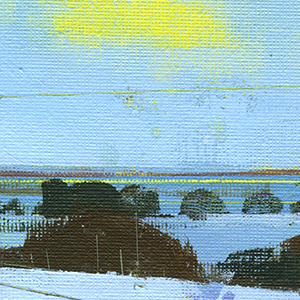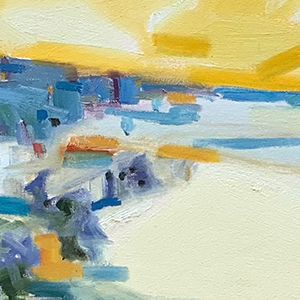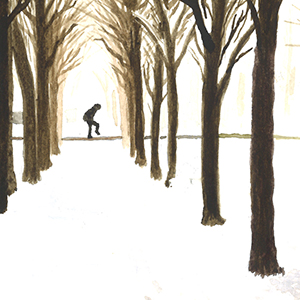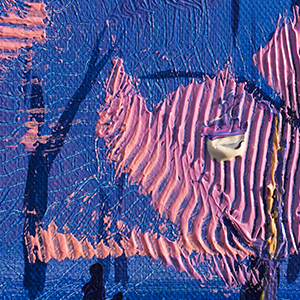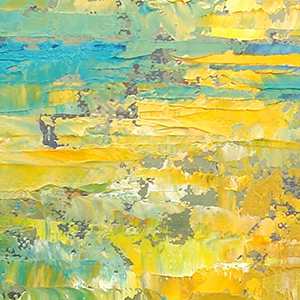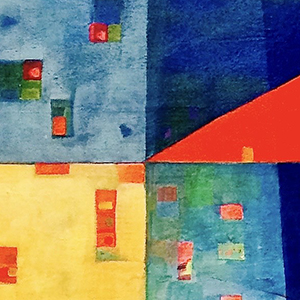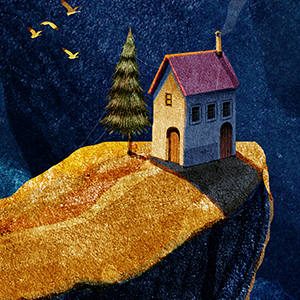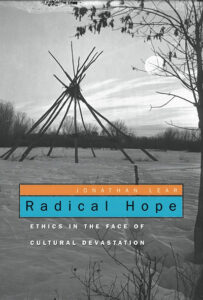 Radical Hope: Ethics in the Face of Cultural Devastation by Jonathan Lear was first published by Harvard University Press in 2006. Lear, a professor of philosophy at the University of Chicago, is also a trained psychoanalyst. In the years since he wrote Radical Hope, he has maintained and expanded his relationship with members of the Crow tribe, and has continued to explore the themes of the book. His most recent book, Imagining the End: Mourning and the Ethical Life (Harvard University Press, 2022), picks up some of these threads. We sat down with Lear to talk about radical hope, the philosophical imagination, and the Crow.
Radical Hope: Ethics in the Face of Cultural Devastation by Jonathan Lear was first published by Harvard University Press in 2006. Lear, a professor of philosophy at the University of Chicago, is also a trained psychoanalyst. In the years since he wrote Radical Hope, he has maintained and expanded his relationship with members of the Crow tribe, and has continued to explore the themes of the book. His most recent book, Imagining the End: Mourning and the Ethical Life (Harvard University Press, 2022), picks up some of these threads. We sat down with Lear to talk about radical hope, the philosophical imagination, and the Crow.
New to Radical Hope? We recommend starting with Charles Taylor’s review of the book from 2007 in the New York Review of Books, which provides an overview and defines terms, such as “counting coups.” More fundamentally, Radical Hope is about what happens when a culture dies, when the roles, values, symbols, and ways of being and organizing daily life are lost forever. Radical hope in this instance is a rare courage and creativity to see beyond despair and imagine an alternative mode of flourishing. “As a story of courage and moral imagination, it is very powerful and moving. But it also offers the kind of insights that would-be builders of ‘new world order’ desperately need.” (Taylor 2007)
Suzanne Shanahan: Thank you for joining us today. I wanted to start by sharing a little background about why I have been captivated by the notion of Radical Hope and have taught it in my first-year student seminar since it was published.
My work is on displacement and refugees, and I work with refugees in the Middle East and East Africa, but I also do a lot of work on the process of resettlement into the United States. The first time I was teaching a service-learning course called Refugees, Rights and Resettlement, the class sponsored a Bhutanese refugee family. This was a 30-year-old single mother of four children, ages 15 and younger, all of whom had never been in formal schooling and were illiterate and enumerate. And I remember clearly this one moment when they had arrived in the United States without even a change of clothing, and so through a translator I had said, “we’re going to go shopping,” and I brought them to Target. When we arrived in the Target parking lot, they got out of the car, and the oldest daughter and the mother fell to their knees and wept because they had no idea what this thing was. They had a vision in their mind of what shopping was, and it was an outdoor experience. It was very communal. It was a place of joy and interaction and human connection, and the Target parking lot is a lot of things, but not that.
And so this notion of cultural devastation and of how to reimagine one’s life has been sort of a recurrent theme, both in my work with folks who are still displaced in refugee camps, but also those coming to the United States. It has been fascinating to me over these many years the extent to which this is the one text that enables students to understand. And so, Radical Hope has had such a profound impact on so many of my students over the years, that this opportunity to talk with you about it is a fantastic treat.
Jonathan Lear: Thank you. It’s lovely to meet you. When I write, I hope that my emerging book will find its readers, but I do not know who they will be. It’s always a special treat for me to meet such a reader.
SS: I wonder if we could start by talking a little bit about the origins and inspirations for Radical Hope.
JL: When I was a young professor at Yale in the late-80s there was a lunchtime lecture at the Humanities Institute, and another young faculty member, William Cronon, was giving a talk. He quoted Plenty Coups. He used that phrase, “When the buffalo went away the hearts of my people fell to the ground, and they could not lift them up again. After this nothing happened.” As soon as I heard that I felt struck by it. It really upset me. And then the lunch was over and I forgot about it.
About 10 or 15 years passed. I had left Yale and come to the University of Chicago. I would take walks along the lake pretty much every day. One day when I was walking, those words of Plenty Coups came back into my mind, it felt like from nowhere.
I’m also a trained psychoanalyst, so when things come back into my mind, I tend to pay attention. I thought, “Something’s happened here,” but I didn’t know what it was. I felt this phrase matters to me, and I’m going to find out about it.
I’ve taken it to be part of my job is to figure out what philosophy is and what it should be. The people who have in influenced me over the years are Socrates and Aristotle and Kierkegaard and—he’s not a philosopher—Freud. They have a lot of differences, but they share a Socratic impulse.
Socrates was out on the street. He was open to meeting people and he was ready to see philosophy emerge in everyday issues. His interlocutor would be walking the other way on the street. Euthyphro was about to sue his father for impiety, and Socrates says “well, what is impiety?”, and philosophy begins. Socrates was ready to see and hear how philosophy could open up in an everyday moment. That has been very important to me.
In a different way, Aristotle, was confident that philosophy emerges from the details of life. He spent time looking at trees and mollusks, listening to birds, fish and scallops. And, again in different ways, with Kierkegaard and Freud: they committed themselves to the idea that a universe of meaning could open up from the details of human lives.
And so this phrase from Plenty Coups coming to me felt like what Kierkegaard called a confrontation. I could either ignore it (and go on with daily life) or I could try to face it and see what it might come to mean. But there was no getting around that choice. So, I got started.
SS: I wonder if that psychoanalytic training and perspective and the attempt to bring that together with philosophy is part of the reason why these books are so accessible. I would say philosophy animates both Radical Hope and Imagining the End, but there’s something about the fundamental nature of the human condition that it is coming from outside philosophy and enables one to generalize these books and apply them to a range of situations and cases.
So, once you decided to let Plenty Coups confront you, what did you do next?
JL: There’s a great bookstore here in Chicago, the Seminary Co-op. They had a classic biography of Plenty Coups by Frank Linderman. When I read it, I had two thoughts: one is that Plenty Coups wanted to open a conversation and he didn’t know who his readers would be, and two, I wondered what it would mean to honor him by entering and continuing the conversation.
Again, I’m a philosopher. I honor other disciplines, and I’ve learned so much from historians and anthropologists, but I don’t want to be a historian or an anthropologist. So, what I thought I would do as a distinctively philosophical exercise would be to honor Plenty Coups by carrying out a rigorous imaginative exercise with the question, “What might he have meant if he was trying to say something true?” I wanted to respect him by taking him to be saying something true and important, but that I did not yet understand. That was how it got started.
SS: I like how you’re describing the intellectual roots of this and the Socratic approach to the relevance of philosophy in the world; and while not an anthropologist, you describe this as a work of philosophical anthropology. I wonder, as a speculative conversation with Plenty Coups, what guided your intellectual process, what were the materials, and how did you navigate the absence of the central character?
JL: I feel the words “philosophical anthropology” are completely earnest, but Kierkegaard says just because it’s earnest doesn’t mean it isn’t also ironic. And so, there’s a certain kind of irony there, but a serious form of irony.
Firstly, I’ll say I tried to be constrained by all the facts as I know them. I tried to be a serious student. I read voraciously and spent a lot of time with Crow friends. But what I tried to do in the essay was work out a rigorous, but an imaginative exercise. There’s no claim about getting to the truth about what he really meant. I don’t know what he really meant, but I’m not trying to do that. I’m trying to figure out what might he have meant if he were trying to witness a truth. And that’s a philosophical exercise. But the conversation is also with anyone who wants to be a reader and enter into a conversation with me—especially the Crow people I met who are also very concerned about what he might have meant. What is his meaning for their present and future? How are they to understand their past?
SS: How did the Crow who you met influence you?
JL: When I started, I flew up to the reservation, which is in southeast Montana. I really didn’t want to impose on anybody, but I looked online, and there was a tribal college and a member of the faculty who was teaching Crow history and Crow culture to the Crow people themselves. I wrote to him and said, “I really don’t want to impose, but I’m interested in Plenty Coups and what he was saying, and might we meet?”
We met for breakfast, and after an hour I planned to say thank you so much and goodbye, but he asked what I was going to do with the rest of the day. I told him I planned to drive about 70 miles over to Plenty Coups’ home and take a look. And he said, “Well, I’ll come too.” We ended up spending the whole day together, and that began a friendship that exists to this day.
I just saw him a few weeks ago. The pandemic was a big hiatus, but until then I had been going up to the reservation 2 or 3 times a year and a lot of my Crow friends have come to Chicago. That’s a big part of the story about what has happened since the book was published.
SS: In what ways has the concept of radical hope that you explored in the book and the conversation with Plenty Coups developed through these friendships?
JL: When the book first was published, I got invited to the Crow Reservation by the faculty of Little Bighorn College, and I didn’t know how that would go. Would they hate the book? Would they like the book? The room was absolutely packed with faculty and students and tribal elders. I was introduced and I had just begun—I really didn’t get 30 seconds into my talk—when one of the tribal elders sitting in the front raised his hand and I called on him and he said, “Who are your people?”
I learned much later, you introduce yourself in this culture by explaining where you are from and who your people are. But at the time nobody had ever asked me that question. It’s not a question I had thought about. But on my feet I said, “I think the best answer to your question is that I’m Jewish.” And then it just came into my mind and I said, “I think that around the very same time your ancestors were moving on to this reservation, my ancestors were getting out of Europe as fast as they could. They were escaping Europe.” At that point another tribal elder raised his hand and asked, “Why do you Jews never fight among each other, while we Crow are always fighting against each other?” Obviously, that is not how it seemed to me! I just let the conversation go where it would. It turned out what they really wanted to know about was how the Jewish people have survived. How could it be that we’re not an extinct tribe? They wanted practical advice. They don’t know whether they’re going to be here in 50 years, and so they really wanted to talk about the question, “How does a tribe survive?” And that’s what we talked about.
In almost 20 years of doing this, I’ve had a lot of people come visit me in Chicago over the years, and a lot of them want to go to synagogue. So the conversation is ongoing. Plenty Coups is the absent person, around which all these friendships have formed, but the focus in these relationships is really on going forward, and not on looking back.
SS: And this has led to other collaborations, such as the Apsáalooke Women and Warriors project. [Apsáalooke is another name for the Crow tribe].
JL: Yes. The President of the University of Chicago asked me if I would run a new kind of interdisciplinary institute at the University called the Neubauer Collegium for Culture and Society, and I did that as sort of citizenly service to the University for eight years. When I got started, we funded a project called the Open Fields Project, which included anthropologists on the faculty here along with native peoples and curatorial staff at the Field Museum of Natural History in Chicago. The aim was to look into what the future of a museum holding inidgenous people’s artifacts should be. We at the Neubauer started bringing Crow people into Chicago to meet with people at the Field Museum, along with other Native Americans to talk about these very big issues. As one might expect, there were a lot of questions and a fair amount of tension, but it was overall a creative process.
And then there was an accidental cancellation of one of the big shows they had been planning. It was a lucky moment. I said to one of the head curators that the Crow people could put on an exhibition. We already had Nina Sanders, who is Crow, working with us and she is an outstanding curator. The Field Museum decided to take the leap. Many Crow people contributed and the Field Museum staff worked so hard. The outcome was the Apsáalooke Women and Warriors exhibition, the first exhibition in the Field Museum’s history in which the curator was Crow. And the theme of the exhibition was not just a retrospective and nostalgic look at the “Indian” past, but it included the art and creations of many contemporary Crow artisans and artists. It was forward looking. As one of my dearest Crow friends said to me, “This is the first time we have got to tell our story to others.”
SS: What I like about the exhibit is how it continues your participation in that conversation, but also the forward-looking nature. How conceptually did you get from “And then nothing happened” to this notion of radical hope, which is forward-looking when so much is unknown, but also that has an absence of despair?
JL: When I looked at the example of Plenty Coups, I thought, this is a person who is standing up and facing a devastation, acknowledging the devastation, and simply refusing to give into despair. And that’s what made the hope radical, because he could no longer say which thing it would be.
At the time of the exhibition, we had 70 Crow people come to Chicago as our guests for a week and there was a Crow celebration. We had a parade on the campus of the University of Chicago. It was the most beautiful parade in the history of the universe as far as I’m concerned. But at the end there was a Crow ceremony—on the lawn of the Neubauer Collegium, and one of the tribal leaders said to the curator, Nina Sanders, “You have counted coups today.” And she had! I had watched her fight for a year, struggling about how to design the exhibition, how to show it, who gets to do what – it was a lot of earnest struggle. It wasn’t all fun. And so the parade was not just a celebratory parade; for the Crow participants, it had a historical meaning of coming in and taking control of how things are going to go now.
Plenty Coups could never have imagined that this is the fate of what counting coups would become—what Nina Sander’s accomplishments mean now. If he had lived until this time, it would be be clear to him. But back in that warrior culture he was exiting, there is no way to think about what Nina accomplished as counting coups. It took 100 years, but I could see before my eyes the concept being brought back to a new life. She is a warrior, and she did count coups.
I felt this was exactly what I was trying to understand. I couldn’t understand it ahead of time, but it’s what the world has taught me. But what makes me so happy is that I was part of a conversation that kept going, and others took it over, and the Crow took it back, and that’s exactly what should happen.
SS: That’s extraordinary.
JL: Thank you. I also realize we would not be having this conversation if I had not written the book, and I am grateful for this. For me, success is finding a reader who can use her own imagination to think “I’m teaching about refugees from Africa. This book works for me and it will work for my students.” That’s great. That’s what I like. For me, that is what it looks like for things to work.






